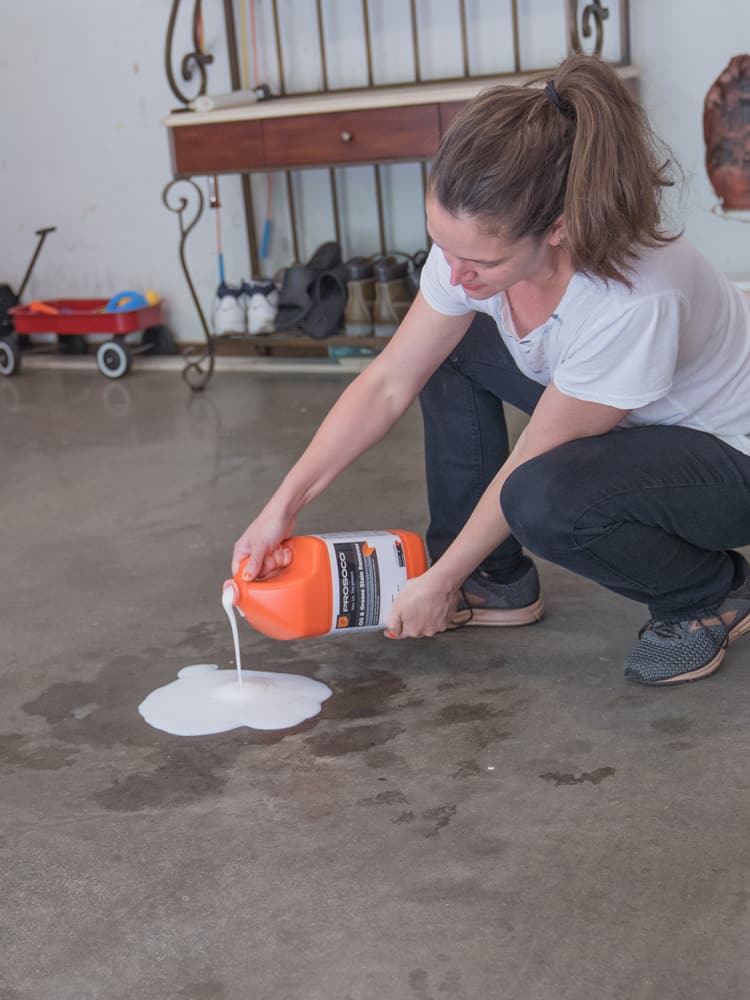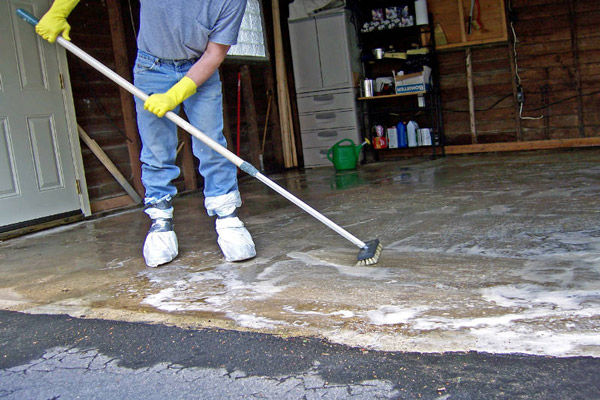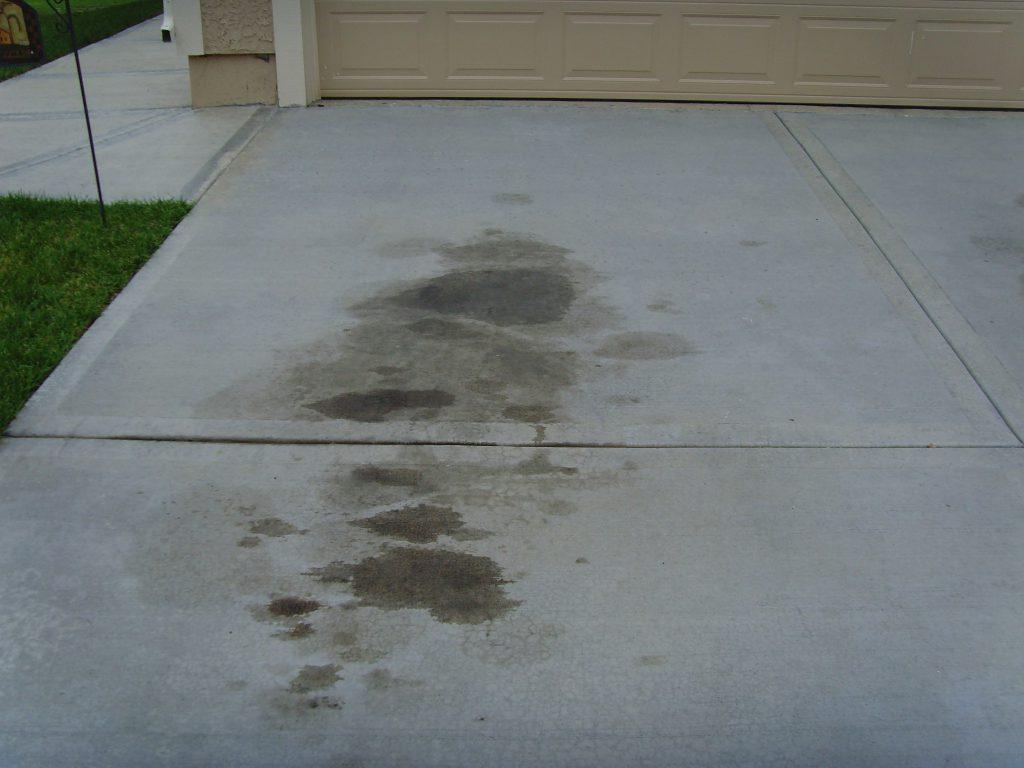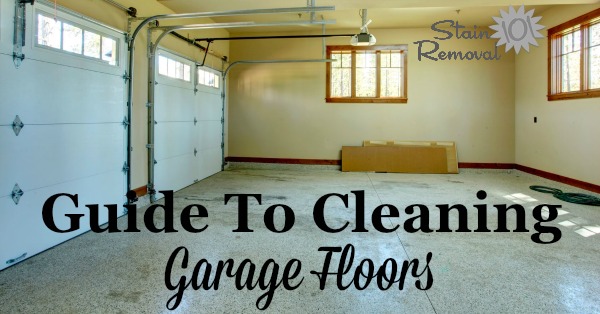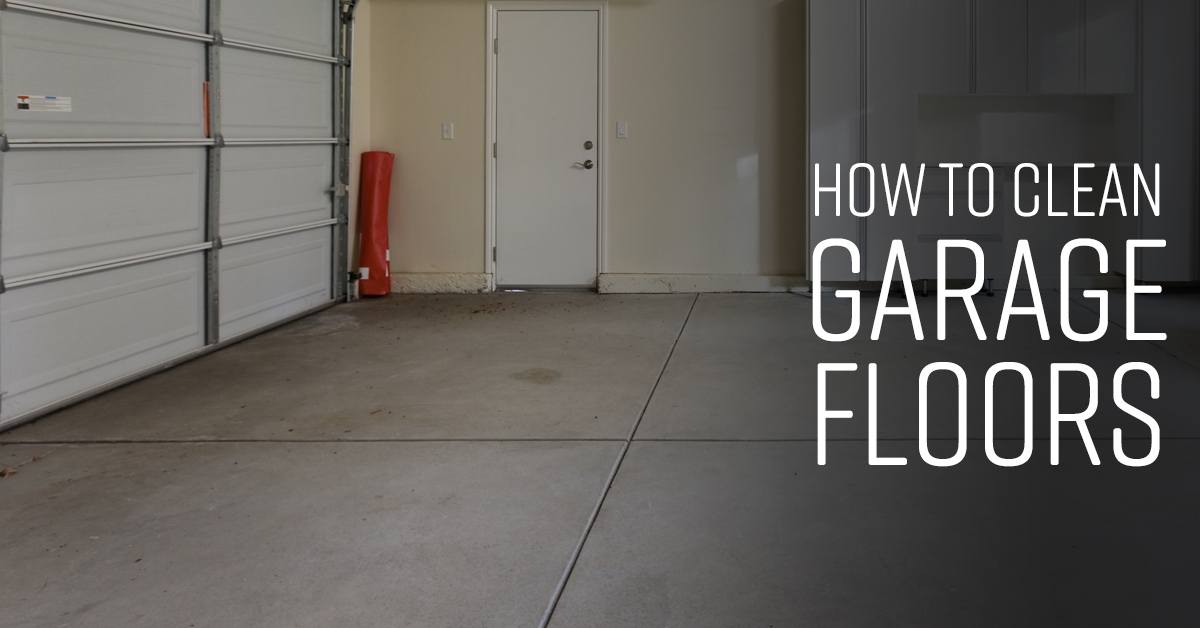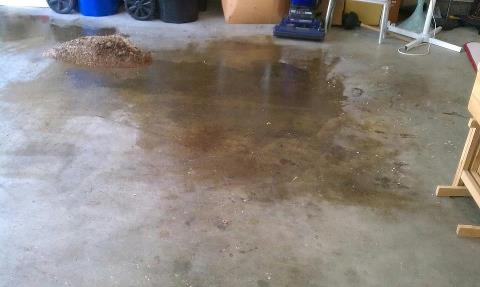Identifying Different Types of Garage Floor Stains
When it comes to cleaning a garage floor, understanding the types of stains you’re dealing with is crucial. Different stains require different methods of cleaning, so identifying the right kind can save time and ensure the floor looks spotless. Over the years, I’ve come across various types of stains, and each one needs a specific approach to remove them effectively.
- Oil and Grease Stains: These are the most common types of stains you’ll find in a garage, especially if you work on cars or store lawn equipment. Oil and grease leave dark, often slippery spots that can be difficult to clean because they seep into porous concrete.
- Rust Stains: Rust stains come from tools, equipment, or anything metal that’s been sitting in the garage. These stains are usually reddish-brown and can penetrate deep into the concrete, making them challenging to remove.
- Tire Marks: Tire marks form from rubber rubbing off onto the concrete floor. These black streaks can become more stubborn over time, especially if they’ve had time to harden.
- Paint Spills and Splashes: Whether from DIY projects or accidents, paint splatters are common in garages. Water-based paint is easier to clean up, but oil-based paints can be a real headache if they’re not dealt with quickly.
- Chemical Spills: Solvents, cleaners, or even spilled gasoline can leave stains and sometimes damage the surface of your garage floor. These stains might discolor the concrete or leave a residue that needs to be cleaned up before it becomes permanent.
- Mud and Dirt Buildup: Although not technically a stain, accumulated dirt and mud can leave the garage floor looking worn out. Over time, if mud dries and hardens, it can be challenging to clean and may discolor the floor.
- Water Stains: If your garage is prone to leaks or flooding, water stains may appear. These can lead to mold or mildew if not addressed, leaving unsightly dark patches on your floor.
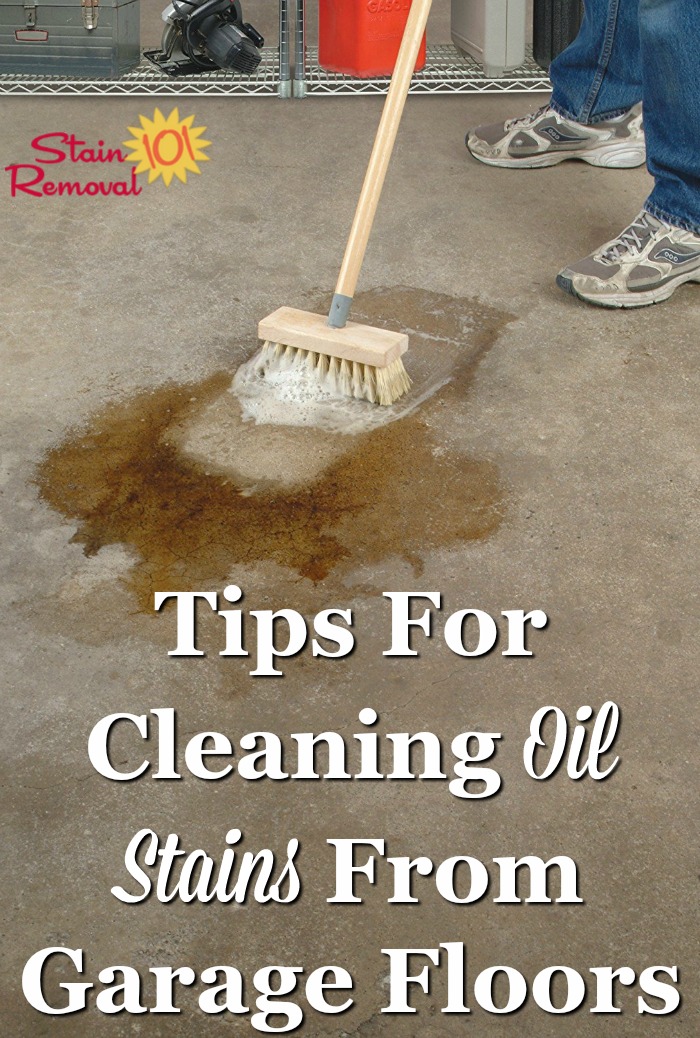
Essential Tools and Cleaners for Tackling Garage Floor Stains
Once you’ve identified the types of stains, it’s time to gather the right tools and cleaners. Over the years, I’ve learned that using the right products makes all the difference in how easily and effectively you can remove those stubborn marks. Here are some must-haves for cleaning garage floors.
Degreasers
Degreasers are a must for oil and grease stains. They break down the oils, making them easier to scrub away. You can find specific garage floor degreasers, or even use household items like baking soda and dish soap for lighter spills.
Wire Brushes
A good-quality wire brush is essential for scrubbing stains like rust or heavy dirt buildup. These brushes have stiff bristles that dig into the porous concrete and dislodge grime from deep within the surface.
Pressure Washer
A pressure washer can blast away dirt, mud, and some lighter stains with ease. It’s a powerful tool that’s perfect for large areas or regular maintenance. For tougher stains, combining a pressure washer with a cleaner will give the best results.
Concrete Cleaners
Specialized concrete cleaners are designed for tougher stains like paint or chemicals. These cleaners are formulated to penetrate the concrete and lift stubborn stains without damaging the surface.
Absorbent Materials
For fresh oil or chemical spills, having an absorbent material like kitty litter or sawdust on hand is invaluable. These materials soak up the liquid before it can seep into the floor, making the eventual cleaning process much easier.
Rags and Sponges
Don’t underestimate the power of good rags and sponges. These are great for wiping up liquid stains, scrubbing smaller areas, or applying cleaning solutions to specific spots.
Protective Gear
Finally, always protect yourself. Sturdy gloves, safety goggles, and a mask are necessary, especially when dealing with strong chemicals or using power tools like a pressure washer.
How to Remove Oil and Grease Stains from a Garage Floor
Oil and grease stains are some of the toughest to remove from a garage floor. I’ve found that with the right approach, even the most stubborn oil marks can be cleaned up effectively. Here’s how I tackle oil and grease stains.
Absorb Fresh Spills Immediately
If the oil spill is fresh, the first step is to absorb as much of it as possible. I always reach for kitty litter or sawdust to soak up the oil. Sprinkle a generous amount on the spill, let it sit for at least 30 minutes, then sweep it up.
Apply a Degreaser
Once the surface oil is gone, it’s time to treat the stain. I like to use a heavy-duty degreaser specifically designed for garage floors. Apply the degreaser directly to the stain and let it sit for about 10-15 minutes to break down the oil.
Scrub the Stain
Using a stiff-bristled brush or a wire brush, scrub the stain thoroughly. It’s important to apply a lot of pressure to work the cleaner into the porous surface of the concrete.
Rinse the Area
After scrubbing, I rinse the area with water. A garden hose works well for this, but for really stubborn stains, a pressure washer can give an extra boost. Repeat the process if needed until the stain fades.
Use Baking Soda for Persistent Stains
If the degreaser doesn’t fully remove the stain, I’ve had success using baking soda. Mix it with water to form a paste, spread it on the stain, and let it sit for a few hours before scrubbing it away.
Seal the Concrete
After the stain is gone, I recommend sealing the concrete to prevent future stains. A good-quality sealer will protect the floor from absorbing more oil and make future cleanups easier.
Dealing with Rust Stains on Concrete Garage Floors
Rust stains are another common issue in garages. Anything metal that’s been exposed to moisture can leave unsightly rust marks. Here’s how I tackle rust stains effectively.
Start with Lemon Juice or Vinegar
Both lemon juice and white vinegar are natural acids that can help break down rust stains. I usually pour a generous amount directly onto the stain and let it sit for about 10 minutes.
Scrub with a Wire Brush
After letting the acid work its magic, I scrub the rust with a wire brush. The acid helps to loosen the rust from the surface, making it easier to remove with some elbow grease.
Rinse and Repeat if Necessary
Once I’ve scrubbed the area, I rinse it off with water. Sometimes, if the rust is particularly stubborn, it may take a couple of applications to fully remove the stain.
Try a Commercial Rust Remover
For really tough rust stains, there are commercial rust removers available. These products are specifically designed to break down rust, and they can be a lifesaver if natural methods aren’t working.
Prevent Future Rust Stains
To prevent rust stains from recurring, I try to keep metal tools and objects elevated off the floor, especially in areas prone to moisture. This simple step can save a lot of headaches later on.
Consider Sealing the Concrete
Just like with oil stains, sealing the floor can help protect against rust stains in the future. A concrete sealer will create a barrier that prevents the rust from penetrating the surface.
Cleaning Paint Spills and Splashes from Garage Floors
Paint spills can be frustrating, especially when they dry and harden on a garage floor. But with the right approach, they can be removed without too much hassle. Here’s how I deal with paint stains in the garage.
Act Quickly on Fresh Spills
The best way to deal with paint spills is to clean them up immediately. If the paint is still wet, I grab a rag and wipe up as much as I can. The sooner you act, the easier the cleanup.
Scrape Off Dried Paint
For dried paint, I use a paint scraper to lift as much of it as possible. A plastic scraper works well for this, as it won’t scratch the concrete like a metal one might.
Apply a Paint Remover
If scraping doesn’t get the entire stain, I apply a paint remover or stripper designed for concrete surfaces. These products help soften the paint, making it easier to scrub away.
Scrub with a Stiff Brush
After applying the paint remover, I use a stiff brush to scrub the area. Sometimes, I need to use a little elbow grease to get the paint fully removed.
Rinse the Area
Once the paint is gone, I rinse the area with water to remove any residue. If the paint remover is particularly strong, I also make sure to wear gloves and a mask for protection.
Seal the Floor to Prevent Future Spills
Finally, I recommend sealing the garage floor, especially if you do a lot of painting or DIY projects in the space. A sealed floor is much easier to clean and prevents paint from soaking into the concrete.
Removing Tire Marks and Rubber Stains
Tire marks and rubber stains are common in garages, especially if you park your car inside. These black streaks can be difficult to remove, but with the right approach, your floor can look as good as new.
Use a Degreaser on Fresh Marks
Fresh tire marks can often be removed with a degreaser. I apply the cleaner directly to the marks and let it sit for a few minutes before scrubbing with a stiff brush.
Scrub with a Wire Brush
For older, more stubborn tire marks, a wire brush is essential. The brush helps to lift the rubber off the concrete surface without damaging the floor.
Apply a Baking Soda Paste for Tough Stains
If the degreaser doesn’t fully remove the tire marks, I’ve had success using a baking soda paste. Mixing baking soda with water creates a gritty paste that helps lift rubber stains when scrubbed with a brush.
Rinse and Dry the Area
After scrubbing, I rinse the area thoroughly with water. It’s important to remove all traces of the cleaner, especially if you plan to seal the floor afterward.
Use a Pressure Washer for Large Areas
If the tire marks cover a large portion of the floor, I break out the pressure washer. The high-powered stream of water can help blast away the marks with minimal effort.
Seal the Garage Floor for Future Protection
Like with other stains, sealing the floor can prevent future tire marks from becoming as stubborn. A sealed floor creates a smooth surface that’s easier to clean.
Preventing Future Stains and Keeping Your Garage Floor Clean
The best way to keep your garage floor looking its best is by preventing stains from forming in the first place. Over the years, I’ve found a few simple tips that help keep the garage floor clean and stain-free.
Use Mats or Rugs
Placing mats or rugs under cars or work areas can help catch spills before they hit the concrete. This simple step can prevent oil, grease, and other liquids from staining the floor.
Keep Tools and Chemicals Elevated
Keeping tools, chemicals, and other potentially staining items off the floor helps prevent accidental spills. I use shelves or racks to store items like paint, oil, and rust-prone tools.
Clean Spills Immediately
The sooner you clean up a spill, the easier it is to remove. I always have absorbent materials like kitty litter or sawdust on hand to soak up any fresh spills.
Seal the Garage Floor
Sealing the garage floor is one of the best ways to protect it from stains. A good sealer creates a protective layer that prevents liquids from soaking into the concrete.
Regular Maintenance
I make it a habit to clean the garage floor regularly. Sweeping, hosing down the floor, and removing dirt and debris help prevent stains from setting in over time.
Use Stain-Resistant Paint
If you want to take it a step further, consider using stain-resistant paint on the garage floor. This not only protects the concrete but also makes it easier to clean up any spills that occur.
How to Clean Garage Floors – Simple Green
Guide To Cleaning Garage Floors Clean garage floor, Clean garage
Get the Stains off your Garage Floor!
How to Clean Garage Floors – Simple Green
Related Posts:
